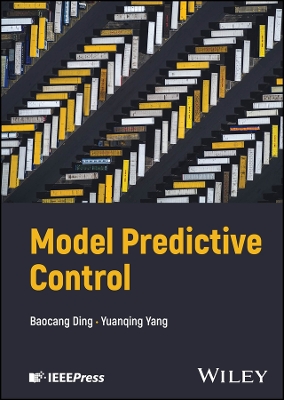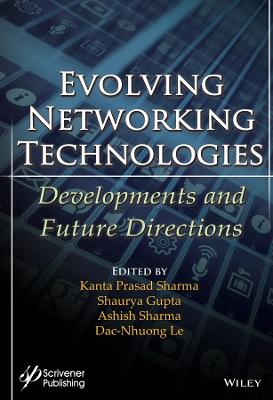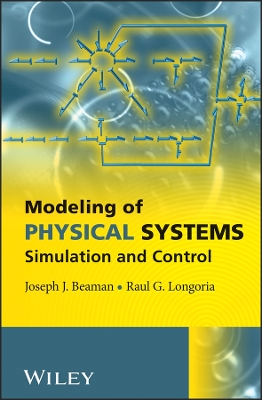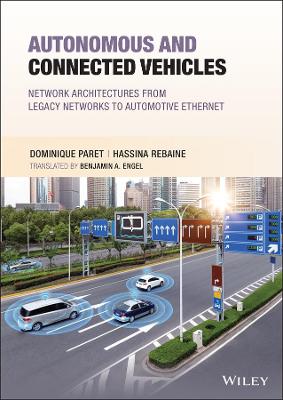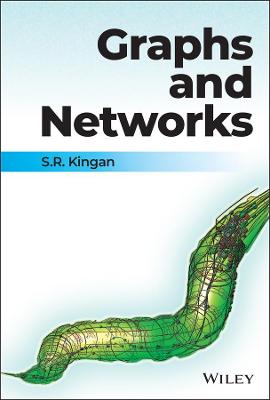Security and Privacy Vision in 6G
 -15%
portes grátis
-15%
portes grátis
Security and Privacy Vision in 6G
A Comprehensive Guide
Liyanage, Madhusanka; Porambage, Pawani
John Wiley & Sons Inc
08/2023
384
Dura
Inglês
9781119875406
15 a 20 dias
666
About the Authors xix
Foreword xx
Preface xxii
Acknowledgments xxv
Part I Introduction 1
1 Evolution of Mobile Networks 3
1.1 Introduction 3
1.2 6G Mobile Communication Networks 4
1.2.1 6G as Envisioned Today 6
1.3 Key Driving Trends Toward 6G 6
1.4 6G Requirements/Vision 8
1.4.1 6G Development Timeline 10
References 12
2 Key 6G Technologies 15
2.1 Radio Network Technologies 15
2.1.1 Beyond Sub 6 GHz Toward THz Communication 15
2.1.2 Nonterrestrial Networks Toward 3D Networking 17
2.2 AI/ML/FL 19
2.3 DLT/Blockchain 22
2.4 Edge Computing 24
2.5 Quantum Communication 27
2.6 Other New Technologies 29
2.6.1 Visible Light Communications 29
2.6.2 Large Intelligent Surfaces 30
2.6.3 Compressive Sensing 30
2.6.4 Zero-Touch Network and Service Management 31
2.6.5 Efficient Energy Transfer and Harvesting 32
References 33
3 6G Security Vision 43
3.1 Overview of 6G Security Vision 43
3.1.1 New 6G Requirements 43
3.2 6G Security Vision and KPIs 45
3.2.1 Security Threat Landscape for 6G Architecture 47
References 48
Part II Security in 6G Architecture 51
4 6G Device Security 53
4.1 Overview of 6G Devices 53
4.2 6G Device Security Challenges 55
4.2.1 Growth of Data Collection 55
4.2.2 Cloud Connectivity 56
4.2.3 Device Capacity 56
4.2.4 Ultrasaturated Devices 56
4.3 Addressing Device Security in 6G 57
References 58
5 Open RAN and RAN-Core Convergence 59
5.1 Introduction 59
5.2 Open RAN Architecture 62
5.3 Threat Vectors and Security Risks Associated with Open RAN 65
5.3.1 Threat Taxonomy 65
5.3.2 Risks Related to the Process 65
5.3.2.1 Prerequisites 65
5.3.2.2 General Regulations 67
5.3.2.3 Privacy 67
5.3.2.4 People 68
5.3.3 Risks Related to the Technology 68
5.3.3.1 Open Source Software 68
5.3.3.2 Radio/Open Interface 70
5.3.3.3 Intelligence 71
5.3.3.4 Virtualization 73
5.3.4 Global Risks 76
5.4 Security Benefits of Open RAN 77
5.4.1 Open RAN specific 77
5.4.1.1 Full Visibility 77
5.4.1.2 Selection of Best Modules 78
5.4.1.3 Diversity 78
5.4.1.4 Modularity 78
5.4.1.5 Enforcement of Security Controls 79
5.4.1.6 Open Interfaces 79
5.4.1.7 Open Source Software 79
5.4.1.8 Automation 79
5.4.1.9 Open Standards 80
5.4.2 V-RAN Specific 80
5.4.2.1 Isolation 80
5.4.2.2 Increased Scalability for Security Management 80
5.4.2.3 Control Trust 80
5.4.2.4 Less Dependency Between hardware [HW] and SW 80
5.4.2.5 Private Network 81
5.4.2.6 More Secure Storage of Key Material 81
5.4.3 5G Networks Related 81
5.4.3.1 Edge Oriented 81
5.4.3.2 Simpler Security Model 81
5.5 Conclusion 82
References 82
6 Edge Intelligence 89
6.1 Overview of Edge Intelligence 89
6.2 State-of-the-Art Related to 5G 92
6.2.1 Denial of Service (DOS) 92
6.2.2 Man-in-the-Middle (MitM) Attack 92
6.2.3 Privacy Leakage 93
6.3 State-of-the-Art Related to 6G 94
6.3.1 Training Dataset Manipulation 94
6.3.2 Interception of Private Information 95
6.3.3 Attacks on Learning Agents 95
6.4 Edge Computing Security in Autonomous Driving 95
6.5 Future and Challenges 96
References 97
7 Specialized 6G Networks and Network Slicing 103
7.1 Overview of 6G Specialized Networks 103
7.2 Network Slicing in 6G 104
7.2.1 Trust in Network Slicing 105
7.2.2 Privacy Aspects in Network Slicing 106
7.2.3 Solutions for Privacy and Trust in NS 107
References 107
8 Industry 5.0 109
8.1 Introduction 109
8.2 Motivations Behind the Evolution of Industry 5.0 111
8.3 Key Features of Industry 5.0 112
8.3.1 Smart Additive Manufacturing 112
8.3.2 Predictive Maintenance 113
8.3.3 Hyper Customization 113
8.3.4 Cyber-Physical Cognitive Systems 114
8.4 Security of Industry 5.0 115
8.4.1 Security Issues of Industry 5.0 116
8.5 Privacy of Industry 5.0 118
References 120
Part III Security in 6G Use Cases 125
9 Metaverse Security in 6G 127
9.1 Overview of Metaverse 127
9.2 What Is Metaverse? 128
9.2.1 Metaverse Architecture 129
9.2.2 Key Characteristics of Metaverse 130
9.2.3 Role of 6G in Metaverse 131
9.3 Security Threats in Metaverse 132
9.4 Countermeasures for Metaverse Security Threats 133
9.5 New Trends in Metaverse Security 134
10 Society 5.0 and Security 135
10.1 Industry and Society Evolution 135
10.1.1 Industry 4.0 136
10.1.2 Society 5.0 140
10.2 Technical Enablers and Challenges 144
10.2.1 Dependable Wireless Connectivity 144
10.2.1.1 New Spectrum and Extreme Massive MIMO 144
10.2.1.2 In-X Subnetworks 146
10.2.1.3 Semantic Communication 146
10.2.2 Integrated Communication, Control, Computation, and Sensing 147
10.2.2.1 CoCoCo 147
10.2.2.2 JCAS 148
10.2.3 Intelligence Everywhere 149
10.2.4 Energy Harvesting and Transfer 149
10.2.4.1 Energy Harvesting 149
10.2.4.2 Wireless Power Transfer 150
10.3 Security in Society 5.0 151
References 152
11 6G-Enabled Internet of Vehicles 157
11.1 Overview of V2X Communication and IoV 157
11.2 IoV Use Cases 159
11.3 Connected Autonomous Vehicles (CAV) 160
11.4 Unmanned Aerial Vehicles in Future IoV 161
11.5 Security Landscape for IoV 161
11.5.1 Security Threats 162
11.5.2 Security Requirements 163
References 164
12 Smart Grid 2.0 Security 167
12.1 Introduction 167
12.2 Evolution of SG 2.0 168
12.3 Smart Grid 2.0 169
12.3.1 Comparison of Smart Grids 1.0 and 2.0 170
12.4 Role of 6G in SG 2.0 171
12.5 Security Challenges of SG 2.0 172
12.5.1 Physical Attacks 172
12.5.2 Software Attacks 174
12.5.3 Network Attacks 174
12.5.4 Attacks to the Controller 175
12.5.5 Encryption-Related Attacks 176
12.5.6 AI- and ML-Related Attacks 176
12.5.7 Stability and Reliability of Power Supply 177
12.5.8 Secure and Transparent Energy Trading Among Prosumers and Consumers 178
12.5.9 Efficient and Reliable Communication Topology for Information and Control Signal Exchange 179
12.6 Privacy Issues of SG2. 0 179
12.7 Trust Management 180
12.8 Security and Privacy Standardization on SG 2.0 181
References 182
Part IV Privacy in 6G Vision 185
13 6G Privacy 187
13.1 Introduction 187
13.2 Privacy Taxonomy 188
13.3 Privacy in Actions on Data 189
13.3.1 Information Collection 189
13.3.2 Information Processing 190
13.3.3 Information Dissemination 191
13.3.4 Invasion 191
13.4 Privacy Types for 6G 191
13.4.1 Data 191
13.4.2 Actions and Personal Behavior 192
13.4.3 Image and Video 192
13.4.4 Communication 193
13.4.5 Location 193
13.5 6G Privacy Goals 194
13.5.1 Ensure of Privacy-Protected Big Data 194
13.5.2 Privacy Guarantees for Edge Networks 194
13.5.3 Achieving Balance Between Privacy and Performance of Services 195
13.5.4 Standardization of Privacy in Technologies, and Applications 195
13.5.5 Balance the Interests in Privacy Protection in Global Context 196
13.5.6 Achieving Proper Utilization of Interoperability and Data Portability 196
13.5.7 Quantifying Privacy and Privacy Violations 197
13.5.7.1 Achieving Privacy Protected AI-Driven Automated Network Management Operations 198
13.5.8 Getting Explanations of AI Actions for Privacy Requirements 198
References 198
14 6G Privacy Challenges and Possible Solution 201
14.1 Introduction 201
14.2 6G Privacy Challenges and Issues 202
14.2.1 Advanced 6G Applications with New Privacy Requirements 204
14.2.2 Privacy Preservation Limitations for B5G/6G Control and Orchestration Layer 204
14.2.3 Privacy Attacks on AI Models 205
14.2.4 Privacy Requirements in Cloud Computing and Storage Environments 206
14.2.5 Privacy Issues in Edge Computing and Edge AI 206
14.2.6 Cost on Privacy Enhancements 207
14.2.7 Limited Availability of Explainable AI (XAI) Techniques 208
14.2.8 Ambiguity in Responsibility of Data Ownership 209
14.2.9 Data Communication Confidentiality Issues 209
14.2.10 Private Data Access Limitations 210
14.2.11 Privacy Differences Based on Location 210
14.2.12 Lack of Understanding of Privacy Rights and Threats in General Public 210
14.2.13 Difficulty in Defining Levels and Indicators for Privacy 211
14.2.13.1 Proper Evaluation of Potential Privacy Leakages from Non-personal Data 211
14.3 Privacy Solutions for 6G 212
14.3.1 Privacy-Preserving Decentralized AI 212
14.3.2 Edge AI 212
14.3.3 Intelligent Management with Privacy 213
14.3.4 XAI for Privacy 213
14.3.5 Privacy Measures for Personally Identifiable Information 214
14.3.6 Blockchain-Based Solutions 215
14.3.7 Lightweight and Quantum Resistant Encryption Mechanisms 215
14.3.8 Homomorphic Encryption 216
14.3.9 Privacy-Preserving Data Publishing Techniques 217
14.3.9.1 Syntactic Anonymization 218
14.3.9.2 Differential Privacy 218
14.3.10 Privacy by Design and Privacy by Default 219
14.3.11 Regulation of Government, Industry, and Consumer 220
14.3.12 Other Solutions 221
14.3.12.1 Location Privacy Considerations 221
14.3.12.2 Personalized Privacy 222
14.3.12.3 Fog Computing Privacy 222
References 222
15 Legal Aspects and Security Standardization 227
15.1 Legal 227
15.2 Security Standardization 229
15.2.1 ETSI 229
15.2.2 ITU-T 230
15.2.3 3GPP 230
15.2.4 NIST 231
15.2.5 IETF 231
15.2.6 5G PPP 231
15.2.7 NGMN 231
15.2.8 IEEE 232
References 232
Part V Security in 6G Technologies 235
16 Distributed Ledger Technologies (DLTs) and Blockchain 237
16.1 Introduction 237
16.2 What Is Blockchain 238
16.2.1 Types of Blockchain 239
16.3 What Is Smart Contracts 240
16.4 Salient Features of Blockchain 240
16.5 Key Security Challenges Which Blockchain Can Solve 242
16.5.1 Role of Blockchain 242
16.6 Key Privacy Challenges Which Blockchain Can Solve 244
16.6.1 Key Challenges 244
16.6.2 Role of Blockchain 245
16.7 Threat Landscape of Blockchain 246
16.8 Possible Solutions to Secure 6G Blockchains 248
References 249
17 AI/ML for 6G Security 257
17.1 Overview of 6G Intelligence 257
17.2 AI for 6G Security 259
17.3 Use of AI to Identify/Mitigate Pre-6G Security Issues 259
17.4 AI to Mitigate Security Issues of 6G Architecture 261
17.5 AI to Mitigate Security Issues of 6G Technologies 262
17.6 Security Issues in AI 263
17.7 Using AI to Attack 6G 263
References 264
18 Role of Explainable AI in 6G Security 267
18.1 What Is Explainable AI (XAI) 267
18.1.1 Terminologies of XAI 268
18.1.2 Taxonomy of XAI 269
18.1.3 XAI Methods 270
18.2 Use of XAI for 6G 273
18.3 XAI for 6G Security 275
18.3.1 XAI for 6G Devices and IoT Security 277
18.3.2 XAI for 6G RAN 277
18.3.3 XAI for 6G Edge 278
18.3.4 XAI for 6G Core and Backhaul 278
18.3.5 XAI for 6G Network Automation 279
18.4 New Security Issues of XAI 280
18.4.1 Increased Vulnerability to Adversarial ML Attacks 280
18.4.2 Difficulty to Design Secure ML Applications 281
18.4.3 New Attack Vector and Target 283
References 284
19 Zero Touch Network and Service Management (ZSM) Security 291
19.1 Introduction 291
19.1.1 Need of Zero-Touch Network and Service Management 292
19.1.2 Importance of ZSM for 5G and Beyond 292
19.2 ZSM Reference Architecture 293
19.2.1 Components 294
19.2.1.1 Management Services 294
19.2.1.2 Management Functions 295
19.2.1.3 Management Domains 295
19.2.1.4 The E2E Service Management Domain 295
19.2.1.5 Integration Fabric 295
19.2.1.6 Data Services 296
19.3 Security Aspects 296
19.3.1 ML/AI-Based Attacks 296
19.3.1.1 White-Box Attack 297
19.3.1.2 Black-Box Attack 297
19.3.2 Open API Security Threats 297
19.3.2.1 Parameter Attacks 298
19.3.3 Intent-Based Security Threats 298
19.3.3.1 Data Exposure 298
19.3.3.2 Tampering 299
19.3.4 Automated Closed-Loop Network-Based Security Threats 299
19.3.4.1 MITM Attack 299
19.3.4.2 Deception Attacks 299
19.3.5 Threats Due to Programmable Network Technologies 299
19.3.6 Possible Threats on ZSM Framework Architecture 300
References 300
20 Physical Layer Security 305
20.1 Introduction 305
20.2 Physical Layer Security Background 306
20.2.1 PLS Fundamentals 306
20.2.2 PLS Approaches 307
20.2.2.1 Confidentiality (Edgar) 307
20.2.2.2 Physical Layer Authentication 308
20.2.2.3 Secret Key Generation 309
20.3 The Prospect of PLS in 6G 310
20.3.1 Application Scenarios of PLS in 6G 311
20.3.2 6G Technologies and PLS 312
20.3.2.1 IRS 312
20.3.2.2 Unmanned Aerial Vehicles 313
20.3.3 Cell-Free mMIMO 315
20.3.4 Visible Light Communication (VLC) 316
20.3.5 Terahertz Communication 317
20.3.6 Joint Communications and Sensing 318
References 319
21 Quantum Security and Postquantum Cryptography 327
21.1 Overview of 6G and Quantum Computing 327
21.2 Quantum Computing 328
21.3 Quantum Security 329
21.3.1 Quantum Key Distribution 330
21.3.2 Information-Theoretic Security 331
21.4 Postquantum Cryptography 332
21.4.1 Background 332
21.4.2 PQC Methods 333
21.4.3 PQC Standardization 335
21.4.4 Challenges with PQC 335
21.4.5 Future Directions of PQC 336
21.4.6 6G and PQC 337
References 337
Part VI Concluding Remarks 341
22 Concluding Remarks 343
Index 345
About the Authors xix
Foreword xx
Preface xxii
Acknowledgments xxv
Part I Introduction 1
1 Evolution of Mobile Networks 3
1.1 Introduction 3
1.2 6G Mobile Communication Networks 4
1.2.1 6G as Envisioned Today 6
1.3 Key Driving Trends Toward 6G 6
1.4 6G Requirements/Vision 8
1.4.1 6G Development Timeline 10
References 12
2 Key 6G Technologies 15
2.1 Radio Network Technologies 15
2.1.1 Beyond Sub 6 GHz Toward THz Communication 15
2.1.2 Nonterrestrial Networks Toward 3D Networking 17
2.2 AI/ML/FL 19
2.3 DLT/Blockchain 22
2.4 Edge Computing 24
2.5 Quantum Communication 27
2.6 Other New Technologies 29
2.6.1 Visible Light Communications 29
2.6.2 Large Intelligent Surfaces 30
2.6.3 Compressive Sensing 30
2.6.4 Zero-Touch Network and Service Management 31
2.6.5 Efficient Energy Transfer and Harvesting 32
References 33
3 6G Security Vision 43
3.1 Overview of 6G Security Vision 43
3.1.1 New 6G Requirements 43
3.2 6G Security Vision and KPIs 45
3.2.1 Security Threat Landscape for 6G Architecture 47
References 48
Part II Security in 6G Architecture 51
4 6G Device Security 53
4.1 Overview of 6G Devices 53
4.2 6G Device Security Challenges 55
4.2.1 Growth of Data Collection 55
4.2.2 Cloud Connectivity 56
4.2.3 Device Capacity 56
4.2.4 Ultrasaturated Devices 56
4.3 Addressing Device Security in 6G 57
References 58
5 Open RAN and RAN-Core Convergence 59
5.1 Introduction 59
5.2 Open RAN Architecture 62
5.3 Threat Vectors and Security Risks Associated with Open RAN 65
5.3.1 Threat Taxonomy 65
5.3.2 Risks Related to the Process 65
5.3.2.1 Prerequisites 65
5.3.2.2 General Regulations 67
5.3.2.3 Privacy 67
5.3.2.4 People 68
5.3.3 Risks Related to the Technology 68
5.3.3.1 Open Source Software 68
5.3.3.2 Radio/Open Interface 70
5.3.3.3 Intelligence 71
5.3.3.4 Virtualization 73
5.3.4 Global Risks 76
5.4 Security Benefits of Open RAN 77
5.4.1 Open RAN specific 77
5.4.1.1 Full Visibility 77
5.4.1.2 Selection of Best Modules 78
5.4.1.3 Diversity 78
5.4.1.4 Modularity 78
5.4.1.5 Enforcement of Security Controls 79
5.4.1.6 Open Interfaces 79
5.4.1.7 Open Source Software 79
5.4.1.8 Automation 79
5.4.1.9 Open Standards 80
5.4.2 V-RAN Specific 80
5.4.2.1 Isolation 80
5.4.2.2 Increased Scalability for Security Management 80
5.4.2.3 Control Trust 80
5.4.2.4 Less Dependency Between hardware [HW] and SW 80
5.4.2.5 Private Network 81
5.4.2.6 More Secure Storage of Key Material 81
5.4.3 5G Networks Related 81
5.4.3.1 Edge Oriented 81
5.4.3.2 Simpler Security Model 81
5.5 Conclusion 82
References 82
6 Edge Intelligence 89
6.1 Overview of Edge Intelligence 89
6.2 State-of-the-Art Related to 5G 92
6.2.1 Denial of Service (DOS) 92
6.2.2 Man-in-the-Middle (MitM) Attack 92
6.2.3 Privacy Leakage 93
6.3 State-of-the-Art Related to 6G 94
6.3.1 Training Dataset Manipulation 94
6.3.2 Interception of Private Information 95
6.3.3 Attacks on Learning Agents 95
6.4 Edge Computing Security in Autonomous Driving 95
6.5 Future and Challenges 96
References 97
7 Specialized 6G Networks and Network Slicing 103
7.1 Overview of 6G Specialized Networks 103
7.2 Network Slicing in 6G 104
7.2.1 Trust in Network Slicing 105
7.2.2 Privacy Aspects in Network Slicing 106
7.2.3 Solutions for Privacy and Trust in NS 107
References 107
8 Industry 5.0 109
8.1 Introduction 109
8.2 Motivations Behind the Evolution of Industry 5.0 111
8.3 Key Features of Industry 5.0 112
8.3.1 Smart Additive Manufacturing 112
8.3.2 Predictive Maintenance 113
8.3.3 Hyper Customization 113
8.3.4 Cyber-Physical Cognitive Systems 114
8.4 Security of Industry 5.0 115
8.4.1 Security Issues of Industry 5.0 116
8.5 Privacy of Industry 5.0 118
References 120
Part III Security in 6G Use Cases 125
9 Metaverse Security in 6G 127
9.1 Overview of Metaverse 127
9.2 What Is Metaverse? 128
9.2.1 Metaverse Architecture 129
9.2.2 Key Characteristics of Metaverse 130
9.2.3 Role of 6G in Metaverse 131
9.3 Security Threats in Metaverse 132
9.4 Countermeasures for Metaverse Security Threats 133
9.5 New Trends in Metaverse Security 134
10 Society 5.0 and Security 135
10.1 Industry and Society Evolution 135
10.1.1 Industry 4.0 136
10.1.2 Society 5.0 140
10.2 Technical Enablers and Challenges 144
10.2.1 Dependable Wireless Connectivity 144
10.2.1.1 New Spectrum and Extreme Massive MIMO 144
10.2.1.2 In-X Subnetworks 146
10.2.1.3 Semantic Communication 146
10.2.2 Integrated Communication, Control, Computation, and Sensing 147
10.2.2.1 CoCoCo 147
10.2.2.2 JCAS 148
10.2.3 Intelligence Everywhere 149
10.2.4 Energy Harvesting and Transfer 149
10.2.4.1 Energy Harvesting 149
10.2.4.2 Wireless Power Transfer 150
10.3 Security in Society 5.0 151
References 152
11 6G-Enabled Internet of Vehicles 157
11.1 Overview of V2X Communication and IoV 157
11.2 IoV Use Cases 159
11.3 Connected Autonomous Vehicles (CAV) 160
11.4 Unmanned Aerial Vehicles in Future IoV 161
11.5 Security Landscape for IoV 161
11.5.1 Security Threats 162
11.5.2 Security Requirements 163
References 164
12 Smart Grid 2.0 Security 167
12.1 Introduction 167
12.2 Evolution of SG 2.0 168
12.3 Smart Grid 2.0 169
12.3.1 Comparison of Smart Grids 1.0 and 2.0 170
12.4 Role of 6G in SG 2.0 171
12.5 Security Challenges of SG 2.0 172
12.5.1 Physical Attacks 172
12.5.2 Software Attacks 174
12.5.3 Network Attacks 174
12.5.4 Attacks to the Controller 175
12.5.5 Encryption-Related Attacks 176
12.5.6 AI- and ML-Related Attacks 176
12.5.7 Stability and Reliability of Power Supply 177
12.5.8 Secure and Transparent Energy Trading Among Prosumers and Consumers 178
12.5.9 Efficient and Reliable Communication Topology for Information and Control Signal Exchange 179
12.6 Privacy Issues of SG2. 0 179
12.7 Trust Management 180
12.8 Security and Privacy Standardization on SG 2.0 181
References 182
Part IV Privacy in 6G Vision 185
13 6G Privacy 187
13.1 Introduction 187
13.2 Privacy Taxonomy 188
13.3 Privacy in Actions on Data 189
13.3.1 Information Collection 189
13.3.2 Information Processing 190
13.3.3 Information Dissemination 191
13.3.4 Invasion 191
13.4 Privacy Types for 6G 191
13.4.1 Data 191
13.4.2 Actions and Personal Behavior 192
13.4.3 Image and Video 192
13.4.4 Communication 193
13.4.5 Location 193
13.5 6G Privacy Goals 194
13.5.1 Ensure of Privacy-Protected Big Data 194
13.5.2 Privacy Guarantees for Edge Networks 194
13.5.3 Achieving Balance Between Privacy and Performance of Services 195
13.5.4 Standardization of Privacy in Technologies, and Applications 195
13.5.5 Balance the Interests in Privacy Protection in Global Context 196
13.5.6 Achieving Proper Utilization of Interoperability and Data Portability 196
13.5.7 Quantifying Privacy and Privacy Violations 197
13.5.7.1 Achieving Privacy Protected AI-Driven Automated Network Management Operations 198
13.5.8 Getting Explanations of AI Actions for Privacy Requirements 198
References 198
14 6G Privacy Challenges and Possible Solution 201
14.1 Introduction 201
14.2 6G Privacy Challenges and Issues 202
14.2.1 Advanced 6G Applications with New Privacy Requirements 204
14.2.2 Privacy Preservation Limitations for B5G/6G Control and Orchestration Layer 204
14.2.3 Privacy Attacks on AI Models 205
14.2.4 Privacy Requirements in Cloud Computing and Storage Environments 206
14.2.5 Privacy Issues in Edge Computing and Edge AI 206
14.2.6 Cost on Privacy Enhancements 207
14.2.7 Limited Availability of Explainable AI (XAI) Techniques 208
14.2.8 Ambiguity in Responsibility of Data Ownership 209
14.2.9 Data Communication Confidentiality Issues 209
14.2.10 Private Data Access Limitations 210
14.2.11 Privacy Differences Based on Location 210
14.2.12 Lack of Understanding of Privacy Rights and Threats in General Public 210
14.2.13 Difficulty in Defining Levels and Indicators for Privacy 211
14.2.13.1 Proper Evaluation of Potential Privacy Leakages from Non-personal Data 211
14.3 Privacy Solutions for 6G 212
14.3.1 Privacy-Preserving Decentralized AI 212
14.3.2 Edge AI 212
14.3.3 Intelligent Management with Privacy 213
14.3.4 XAI for Privacy 213
14.3.5 Privacy Measures for Personally Identifiable Information 214
14.3.6 Blockchain-Based Solutions 215
14.3.7 Lightweight and Quantum Resistant Encryption Mechanisms 215
14.3.8 Homomorphic Encryption 216
14.3.9 Privacy-Preserving Data Publishing Techniques 217
14.3.9.1 Syntactic Anonymization 218
14.3.9.2 Differential Privacy 218
14.3.10 Privacy by Design and Privacy by Default 219
14.3.11 Regulation of Government, Industry, and Consumer 220
14.3.12 Other Solutions 221
14.3.12.1 Location Privacy Considerations 221
14.3.12.2 Personalized Privacy 222
14.3.12.3 Fog Computing Privacy 222
References 222
15 Legal Aspects and Security Standardization 227
15.1 Legal 227
15.2 Security Standardization 229
15.2.1 ETSI 229
15.2.2 ITU-T 230
15.2.3 3GPP 230
15.2.4 NIST 231
15.2.5 IETF 231
15.2.6 5G PPP 231
15.2.7 NGMN 231
15.2.8 IEEE 232
References 232
Part V Security in 6G Technologies 235
16 Distributed Ledger Technologies (DLTs) and Blockchain 237
16.1 Introduction 237
16.2 What Is Blockchain 238
16.2.1 Types of Blockchain 239
16.3 What Is Smart Contracts 240
16.4 Salient Features of Blockchain 240
16.5 Key Security Challenges Which Blockchain Can Solve 242
16.5.1 Role of Blockchain 242
16.6 Key Privacy Challenges Which Blockchain Can Solve 244
16.6.1 Key Challenges 244
16.6.2 Role of Blockchain 245
16.7 Threat Landscape of Blockchain 246
16.8 Possible Solutions to Secure 6G Blockchains 248
References 249
17 AI/ML for 6G Security 257
17.1 Overview of 6G Intelligence 257
17.2 AI for 6G Security 259
17.3 Use of AI to Identify/Mitigate Pre-6G Security Issues 259
17.4 AI to Mitigate Security Issues of 6G Architecture 261
17.5 AI to Mitigate Security Issues of 6G Technologies 262
17.6 Security Issues in AI 263
17.7 Using AI to Attack 6G 263
References 264
18 Role of Explainable AI in 6G Security 267
18.1 What Is Explainable AI (XAI) 267
18.1.1 Terminologies of XAI 268
18.1.2 Taxonomy of XAI 269
18.1.3 XAI Methods 270
18.2 Use of XAI for 6G 273
18.3 XAI for 6G Security 275
18.3.1 XAI for 6G Devices and IoT Security 277
18.3.2 XAI for 6G RAN 277
18.3.3 XAI for 6G Edge 278
18.3.4 XAI for 6G Core and Backhaul 278
18.3.5 XAI for 6G Network Automation 279
18.4 New Security Issues of XAI 280
18.4.1 Increased Vulnerability to Adversarial ML Attacks 280
18.4.2 Difficulty to Design Secure ML Applications 281
18.4.3 New Attack Vector and Target 283
References 284
19 Zero Touch Network and Service Management (ZSM) Security 291
19.1 Introduction 291
19.1.1 Need of Zero-Touch Network and Service Management 292
19.1.2 Importance of ZSM for 5G and Beyond 292
19.2 ZSM Reference Architecture 293
19.2.1 Components 294
19.2.1.1 Management Services 294
19.2.1.2 Management Functions 295
19.2.1.3 Management Domains 295
19.2.1.4 The E2E Service Management Domain 295
19.2.1.5 Integration Fabric 295
19.2.1.6 Data Services 296
19.3 Security Aspects 296
19.3.1 ML/AI-Based Attacks 296
19.3.1.1 White-Box Attack 297
19.3.1.2 Black-Box Attack 297
19.3.2 Open API Security Threats 297
19.3.2.1 Parameter Attacks 298
19.3.3 Intent-Based Security Threats 298
19.3.3.1 Data Exposure 298
19.3.3.2 Tampering 299
19.3.4 Automated Closed-Loop Network-Based Security Threats 299
19.3.4.1 MITM Attack 299
19.3.4.2 Deception Attacks 299
19.3.5 Threats Due to Programmable Network Technologies 299
19.3.6 Possible Threats on ZSM Framework Architecture 300
References 300
20 Physical Layer Security 305
20.1 Introduction 305
20.2 Physical Layer Security Background 306
20.2.1 PLS Fundamentals 306
20.2.2 PLS Approaches 307
20.2.2.1 Confidentiality (Edgar) 307
20.2.2.2 Physical Layer Authentication 308
20.2.2.3 Secret Key Generation 309
20.3 The Prospect of PLS in 6G 310
20.3.1 Application Scenarios of PLS in 6G 311
20.3.2 6G Technologies and PLS 312
20.3.2.1 IRS 312
20.3.2.2 Unmanned Aerial Vehicles 313
20.3.3 Cell-Free mMIMO 315
20.3.4 Visible Light Communication (VLC) 316
20.3.5 Terahertz Communication 317
20.3.6 Joint Communications and Sensing 318
References 319
21 Quantum Security and Postquantum Cryptography 327
21.1 Overview of 6G and Quantum Computing 327
21.2 Quantum Computing 328
21.3 Quantum Security 329
21.3.1 Quantum Key Distribution 330
21.3.2 Information-Theoretic Security 331
21.4 Postquantum Cryptography 332
21.4.1 Background 332
21.4.2 PQC Methods 333
21.4.3 PQC Standardization 335
21.4.4 Challenges with PQC 335
21.4.5 Future Directions of PQC 336
21.4.6 6G and PQC 337
References 337
Part VI Concluding Remarks 341
22 Concluding Remarks 343
Index 345

